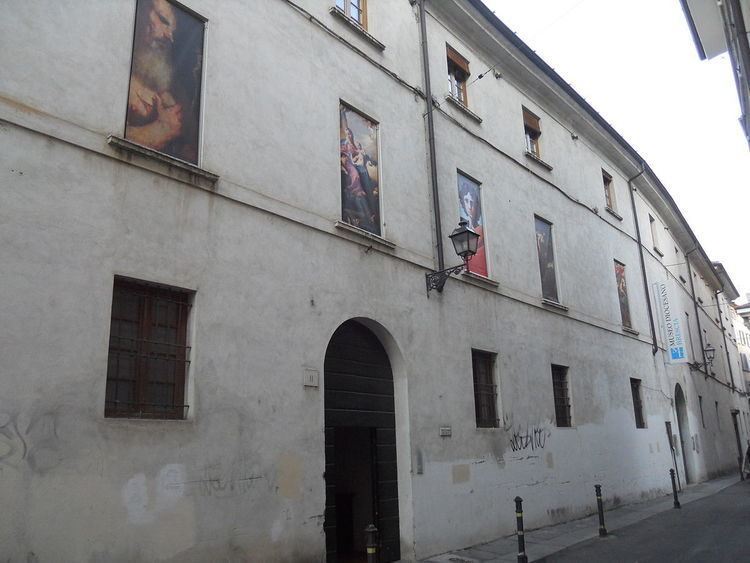Established 1978 Founder Luigi Morstabilini Phone +39 030 40233 | Type Catholic, Sacred art Founded 1978 | |
 | ||
Address Via Gasparo da Salò, 13, 25122 Brescia BS, Italy Similar Curia Diocesana, Voce Media, Biblioteca Diocesana di Brescia, Seminario Vescovile, Centro Pastorale Paolo VI | ||
The Diocesan museum of Brescia is a museum in Italy dedicated to the artistic patrimony of the Diocese of Brescia, and is located in the greater cloister of the Monastery of Saint Joseph in via Gasparo Salò, a short distance from the Piazza della Loggia.
Contents
The museum, founded in 1978 by Bishop Luigi Morstabilini, contains numerous works of art from the entire diocesan territory, throughout the province of Brescia, including paintings, sculpture, gold and silver work, and liturgical vestments. In addition, the museum is the usual setting for the exposition of sacred art in the region.
History
The idea for the creation of a museum for the diocese of Brescia first developed in the 1970s. The initiative was taken up by Monsignor Angelo Pietrobelli who identified the greater cloister of Saint Joseph as a site sufficiently spacious and prestigious. The diocese's acquisition of the property was lengthy and complicated, and ultimately required special governmental legislation.
On December 23, 1978 the bishop of Brescia, Luigi Morstabilini, inaugurated a canonical religious foundation known as the "Diocesan Museum of Sacred Art".
On April 21, 1988 the bishop of Brescia, Bruno Foresti, substituted the old statute with a new one, to which, in addition to the collection and preservation of diocesan works of art that might be in danger of dispersion or ruin, he added initiatives of restoration as well as of cultural and educational outreach. Also, thanks to Bishop Foresti, the greater cloister of Saint Joseph was completely restored. The newer statute, revised by Bishop Giulio Sanguineti, was the basis for the civil recognition of the religious foundation.
From February 2010 the Diocesan Museum of Brescia has been recognized by the Italian state as a Fondazione di Religione e di Culto.
Works
The museum is divided into four sections:
Image gallery
The gallery contains about a hundred works from the diocese's territory, among which are paintings by Giovanni Battista Pittoni, Il Moretto, Romanino, Andrea Celesti, Giuseppe Tortelli, Pietro Avogadro, Francesco Savanni, Paolo Veneziano and Giambattista Tiepolo.
Illuminated manuscripts
This section houses twenty-two illuminated manuscripts, dated from the 12th to the 16th century and coming exclusively from the capitular library of Brescia. The oldest manuscripts were made for Jacopo de Atti, bishop of Brescia (1335 - 1344), and contain illuminations from the French and Bolognese schools. Of great importance:
Precious metal works
The section containing gold and silver work is organized by era and by type, and displays a considerable collection of liturgical objects dated from the late 15th century to the 19th century. It includes works of silver and gold from Brescia, Venice, and Milan. Of particular interest:
Liturgical vestments
The section, inaugurated in 1997, includes a collection of liturgical vestments (end of the 15th - early 19th century), mostly of Venetian and French origin, exhibited by significance, color, simbolism, and style. Of major interest:
The collection also contains a reconstructed loom from the 17th century accompanied by illustrative panels which tell the story of weaving.
